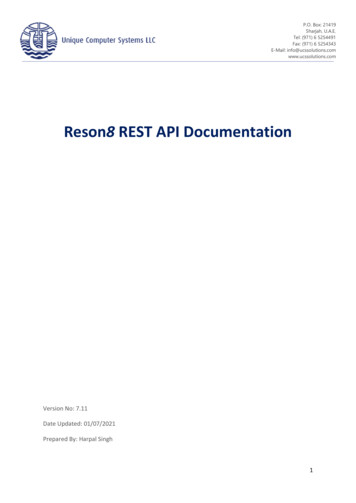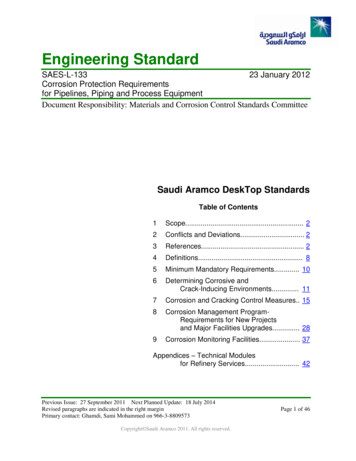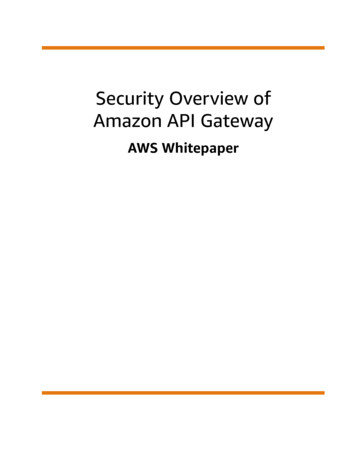
Transcription
Security Overview ofAmazon API GatewayAWS Whitepaper
Security Overview of AmazonAPI Gateway AWS WhitepaperSecurity Overview of Amazon API Gateway: AWS WhitepaperCopyright Amazon Web Services, Inc. and/or its affiliates. All rights reserved.Amazon's trademarks and trade dress may not be used in connection with any product or service that is notAmazon's, in any manner that is likely to cause confusion among customers, or in any manner that disparages ordiscredits Amazon. All other trademarks not owned by Amazon are the property of their respective owners, who mayor may not be affiliated with, connected to, or sponsored by Amazon.
Security Overview of AmazonAPI Gateway AWS WhitepaperTable of ContentsAbstract and introduction . iIntroduction . 1About Amazon API Gateway . 2Benefits of Amazon API Gateway . 2API types . 3Endpoint types . 3Cost for Amazon API Gateway-based applications . 3Security design principles . 4Understand the AWS Security and Compliance Shared Responsibility Model . 4Protect Data In-transit and At-rest . 5Implement a Strong Identity and Access Foundation . 5Amazon API Gateway IAM Constructs . 5Authentication and Authorization . 6Certificate-based Authentication . 7Minimize Attack Surface Area . 7Endpoint Type Selection . 7API Gateway Resource Policies . 7API Integration Security . 8Mitigate Distributed Denial of Service (DDoS) Attack Impacts . 9Amazon API Gateway Rate Limiting . 9AWS Shield and AWS Shield Advanced . 10Implement Inspection and Protection . 10Request Validation . 11Request Transformation . 11Cross-Origin Resource Sharing (CORS) Configuration . 11AWS WAF Integration . 11Enable Auditing and Traceability . 12Amazon CloudWatch . 12AWS X-Ray . 13AWS CloudTrail . 13AWS Config . 14Automate Security Best Practices . 14AWS WAF Security Automations . 14AWS Config Rules . 14AWS CloudTrail and Amazon EventBridge . 14Amazon CloudWatch Alarms . 15Regulatory Compliance . 15Apply Security at All Layers . 15Conclusion and further reading . 17Further Reading . 17Document history and contributors . 18Contributors . 18Notices . 19iii
Security Overview of AmazonAPI Gateway AWS WhitepaperIntroductionSecurity Overview of Amazon APIGatewayPublication date: November 12, 2020 (Document history and contributors (p. 18))This whitepaper presents a deep dive into Amazon API Gateway and integrated AWS services througha security lens. It provides a well-rounded picture of the service for new adopters, and a deeperunderstanding of Amazon API Gateway for current users.The intended audience for this whitepaper includes Chief Information Security Officers (CISOs),information security groups, security analysts, enterprise architects, compliance teams, and anyoneinterested in understanding the security features of Amazon API Gateway and its related services.IntroductionToday, more business workloads use Amazon API Gateway to enable API-driven architectures, improvingscalability, performance, and cost efficiency, without managing the underlying infrastructure. Theseworkloads scale to thousands of concurrent requests per second. API Gateway is used by thousands ofAWS customers to serve trillions of requests every month.The managed environment model of API Gateway intentionally hides many implementation details fromthe user. This makes some existing best practices for cloud security irrelevant, and creates the need fornew best practices. This paper presents a detailed view of these best practices.1
Security Overview of AmazonAPI Gateway AWS WhitepaperBenefits of Amazon API GatewayAbout Amazon API GatewayAmazon API Gateway is a fully-managed service that enables developers to create, publish, maintain,monitor, and secure APIs at any scale. APIs act as the front door for applications to access data, businesslogic, or functionality from backend services. Using API Gateway, you can create RESTful APIs andWebSocket APIs that enable real-time, two-way communication applications. API Gateway supportsa variety of backend integrations, enabling containerized, serverless, and traditional instance-basedworkloads.API Gateway handles all the tasks involved in accepting and processing up to hundreds of thousands ofconcurrent API calls. This includes traffic management, cross-origin resource sharing (CORS) support,authorization and access control, throttling, monitoring, and API version management. API Gatewayhas no minimum fees or startup costs. You pay for the API calls you receive, and the amount of datatransferred out. With the API Gateway tiered pricing model, your cost per million invocations reduces asyour API usage scales.Benefits of Amazon API GatewayAPI Gateway offers a variety of benefits and capabilities: Unified front door: API Gateway enables you to compose unified APIs to a variety of integration typesand microservices with advanced routing and transformation features. Security and governance built in: API Gateway supports authorization using any form of beareror JSON web tokens (JWTs), integration with AWS Web Application Firewall (AWS WAF) for layer 7request validation, and integration with AWS CloudTrail and AWS Config to enable auditing, logging,monitoring, and compliance out of the box. Standards built in: API Gateway supports OpenAPI specification versions 2 and 3 for import andexport of APIs, and authorization with native OpenID Connect and OAuth 2.0 token parsing. Regulatory compliance support: API Gateway enables you to build architectures and systems to meetrequirements for regulatory compliance attestations including SOC, PCI, ISO, FedRAMP, HIPAA, andmore. Observability built in: Native integrations with Amazon CloudWatch and AWS X-Ray provide extensiveAmazon CloudWatch metrics, monitoring and alarming, and end-to-end tracing capabilities. API lifecycle management: API Gateway enables you to run multiple versions of the same APIsimultaneously, so that applications can continue to call previous API versions even after newerversions are published. API Gateway also helps you manage multiple release stages for each APIversion, such as alpha, beta, and production. Each API stage can be configured to interact withdifferent backend endpoints based on your API setup. Stage and version management allow you totest new API versions while ensuring backward-compatibility as user communities transition to adoptthe latest release. Streamlined developer experience: An open source developer portal enables streamlined APIregistration and onboarding processes. It issues API keys to authenticated users and enables themto interactively explore and test APIs. Third party developers of your APIs can download generatedclient SDKs for a number of platforms. You can use these SDKs to test new APIs from your applicationsand distribute them to third-party developers. The generated SDKs handle API keys and sign requestsusing AWS credentials. API Gateway can generate client SDKs for numerous programming languages. Performance at any scale: API Gateway is an always-on, scalable service that supports practically anyload with no warm-up limitations. It provides you with the lowest possible latency for API requestsand responses by accelerating content delivery with global edge network locations using AmazonCloudFront. It can also handle bursts of traffic for your workloads while throttling and authorizing API2
Security Overview of AmazonAPI Gateway AWS WhitepaperAPI typescalls, to help ensure that backend operations can withstand traffic spikes and not be unnecessarilycalled. Pay for value pricing: Cost savings are realized at scale through API Gateway’s simple, tiered, priceper-million request pricing. You pay only for the requests made to your API, with no minimum.API typesAPI Gateway supports multiple API types and a variety of architectural patterns: HTTP APIs: Build stateless RESTful APIs optimized for serverless workloads and HTTP backends usingHTTP APIs. HTTP APIs are the best choice for building APIs that require only API proxy functionality.If your APIs require API proxy functionality and API management features in a single solution, APIGateway also offers REST APIs. WebSocket APIs: Build real-time, two-way communication applications, such as chat apps andstreaming dashboards, with WebSocket APIs. API Gateway maintains a persistent connection to handlemessage transfer between your backend service and your clients.Endpoint typesAmazon API Gateway offers three types of endpoints: Private API endpoints: Can be accessed only from your Amazon Virtual Private Cloud (Amazon VPC)and approved subnets using an interface VPC endpoint. Regional API endpoints: Terminate transport layer security (TLS) within the API deployment in yourchosen AWS region. This is suggested for use cases where API client calls originate in the same region,or for when you want to custom-manage an Amazon CloudFront distribution with a regional APIGateway endpoint as your origin for dynamic content. This is the default selection for HTTP andWebSocket API Gateway endpoints. Edge-optimized API endpoints: Provide API access to geographically distributed clients with managededge network acceleration built-in. This is the default selection for REST API Gateway endpoints. Itshould not be used for APIs where clients consist of other services within the same region, or whenyou require granular control of CloudFront CDN caching behaviors. Client TLS termination occurs atthe CloudFront edge location where the API request is first routed, and AWS manages TLS terminationbetween CloudFront and API Gateway instances.Cost for Amazon API Gateway-based applicationsWith API Gateway, you pay only for invocation requests made to your APIs. There are no minimum feesor upfront commitments. For HTTP APIs and REST APIs, you pay only for the API calls you receive andthe amount of data transferred out. There are no data transfer out charges for Private APIs, though AWSPrivateLink charges apply when using Private APIs in API Gateway. API Gateway also provides optionaldata caching, charged at an hourly rate that varies based on the cache size you select. For WebSocketAPIs, you only pay when your APIs are in use based on number of messages sent and received andconnection minutes, as well as any data transfer.The API Gateway free tier includes one million HTTP API calls, one million REST API calls, one millionmessages, and 750,000 connection minutes per month for up to 12 months.3
Security Overview of AmazonAPI Gateway AWS WhitepaperUnderstand the AWS Security andCompliance Shared Responsibility ModelSecurity design principlesThis whitepaper provides best practice guidance for securing your workloads when using API Gateway.Building on the principles of the Security Pillar of the AWS Well-Architected Framework, the followingdesign principles can help strengthen your security: Understand the AWS security and compliance Shared Responsibility Model: Security andCompliance is a shared responsibility between AWS and you as a customer. Understanding this sharedmodel can help reduce your operational burden. Protect data in-transit and at-rest: Classify your data into sensitivity levels and use mechanisms, suchas encryption, tokenization, and access control, where appropriate. Implement a strong identity and access foundation: Implement the principle of least privilegeand enforce separation of duties with appropriate authorization for each interaction with your AWSresources. Centralize identity management, and aim to eliminate long-lived credentials throughintegrated authentication and authorization. Minimize attack surface area: When architecting your application, examine the connectivityrequirements of each component and restrict the options to the minimum exposure possible. Mitigate Distributed Denial of Service (DDoS) attack impacts: Architect your application for, andprepare teams to deal with, impacts from DDoS attacks. Implement inspection and protection: Inspect and filter your traffic: For components transactingover HTTP-based protocols, a web application firewall (WAF) can help protect from common attacks. Enable auditing and traceability: Monitor, alert, and audit actions and changes to your environmentin real-time. Integrate log and metric collection with systems to automatically investigate and takeaction. Automate security best practices: Automated software-based security mechanisms help improve yourability to securely scale more rapidly and cost-effectively. Apply security at all layers: Apply a defense in-depth approach with multiple security controls. Applyto all layers (for example, edge of network, VPC, load balancing, every instance and compute service,operating system, application, and code).We will now explore each of the key design principles individually.Understand the AWS Security and ComplianceShared Responsibility ModelSecurity and Compliance is a shared responsibility between AWS and the customer. This shared modelcan help relieve your operational burden, as AWS manages the security of the cloud. This includesoperating, managing, and controlling the components from the host operating system and virtualizationlayer, down to the physical security of the facilities in which the service operates. As a customer, youassume responsibility for security in the cloud. This includes management of the guest operating system(including updates and security patches) and other associated application software, and configuration ofthe AWS-provided security group firewall.For API Gateway, AWS manages the underlying infrastructure and foundation services, the operatingsystem, and the application platform. You as a customer are responsible for the security of your4
Security Overview of AmazonAPI Gateway AWS WhitepaperProtect Data In-transit and At-restconfiguration, including your API definition, identity and access management, and networkconfiguration.Protect Data In-transit and At-restEncryption in-transit: API Gateway requires encryption in-transit for all data sent to both controlplane operations, such as creating, updating, and deleting your APIs, and data plane operations such asinvoking your APIs. Operations must be encrypted in transit using TLS, and require the use of HTTPSendpoints. Unencrypted API Gateway endpoints are not supported. API developers can optionally chooseto require a specific TLS version for their custom domain names. You can configure mutual TLS usingcertificate-based authentication on a custom domain name for client invocations.Encryption at-rest: All API definitions are deployed in memory and are only cached to encrypted disks.Customer log files are temporarily stored in encrypted form before being sent securely to CloudWatchLogs or Amazon Kinesis, which stores the logs encrypted at-rest. All integration responses selected tobe cached with API Gateway are persisted on cache nodes, and are configurable to use encryption atrest while stored. Logging is not configured or persisted by default unless explicitly configured by thecustomer.Implement a Strong Identity and AccessFoundationAWS Identity and Access Management (IAM) is an AWS service that helps an administrator securelycontrol access to AWS resources. AWS IAM administrators can control who can be authenticated (signedin) and authorized (have permissions) to use API Gateway resources. API Gateway integrates with AWSIAM for a number of purposes.NoteAny policy should follow the principle of least privileges, only giving the user, group, or role theminimum set of permissions needed, and nothing more.Amazon API Gateway IAM ConstructsIdentity-based PoliciesIdentity-based policies are attached to an AWS IAM user, group, or role, and let you specify what thatidentity can do. Some examples of identity-based policies are: Allowing the role of “api-developer” the ability to create and manage a specific API. Allowing the user “Sam” in the group “Finance” to invoke a specific resource and method (forexample, /records/{record#}/GET) on an API.Resource PoliciesAPI Gateway resource policies are policy documents that you attach to an API that controls whethera specified principal (typically an AWS IAM user or role) can invoke the API. You can use API Gatewayresource policies to allow your API to be securely invoked by: Users from a specified AWS account Specified source IP address ranges or Classless Inter-Domain Routing (CIDR) blocks5
Security Overview of AmazonAPI Gateway AWS WhitepaperAuthentication and AuthorizationService-linked RolesA service-linked role is a unique type of AWS IAM role that is linked directly to API Gateway for itsexclusive use in accessing other AWS resources in your account. Service-linked roles are predefined byAPI Gateway, and include all the permissions that the service requires to call other AWS services on yourbehalf.Tag-based PermissionsIn API Gateway, resources can have tags, and some actions can include tags. When you create an IAMpolicy, you can use tag condition keys to control: Which users can perform actions on an API Gateway resource, based on tags that the resource has Which tags can be passed in an action's request Whether specific tag keys can be used in a requestAuthentication and AuthorizationAPI Gateway supports multiple mechanisms to help you control and manage access to your API. A keycapability you can leverage is the ability to authorize all API requests with API Gateway, and block anyunauthorized requests directly at the API Gateway layer before any requests are sent to your backendintegrations.API Gateway provides fine-grained authorization for your APIs, as granular as authorizing decisions percaller at the combination of unique per-path, per-method level. API Gateway supports the parsing andhandling of any bearer token, and supports native parsing of standardized OpenID Connect (OIDC) andOAuth 2.0 JWTs. Though API Gateway does not serve as an identity provider and does not issue tokensitself, it supports seamless integration with one or more identity providers (IdPs) of your choice. You canenable these capabilities through a choice of three different authorizers: JWT and Amazon Cognito user pools authorizers: Enable authenticating a user by validating theirtokens through checking the issuer, client ID, timestamp, signature, and authorization scopes whenspecified. This authorizer provides seamless validation of Amazon Cognito user pools tokens, or anystandards-compliant OpenID Connect (OIDC) and OAuth 2.0 tokens without the need to write customcode. This option can be set up quickly, and supports basic user validation. JWT and Amazon Cognitouser pools authorizers do not require any custom code. AWS Lambda custom authorizers: Provide fine-grained access control by enabling authorizervalidation using custom business logic that you write according to your specifications. This authorizerchoice provides you with the most flexibility in enabling external lookups, and generating per-userfine-grained AWS IAM policies in response to the first time a user makes a request with their bearertoken. Lambda custom authorizers also provide you with the ability to cache the resulting user’s policy,so the Lambda authorizer is not invoked more often than needed.Additionally, AWS Lambda custom authorizers optionally allow an API key to be sent along with theuser’s policy in the response and associated with the calling user’s bearer token. There is an implicitmapping for metering/throttling purposes without the end user needing to know about their API key,or send it explicitly in their calls. This is the most flexible option of the three authorizer choices, butdoes require that you write custom code for your Lambda function, which can be accelerated throughuse of the approved Lambda authorizer blueprint samples. IAM-based authorization: Provides you with the ability to enable your service to authorize requestsin the same manner all AWS APIs do, which is to validate a unique canonical request signature whichis generated and sent by the API client with each request. Such a signature is uniquely generated,and incorporates the time of request, resource requested, and action, so that even if the signaturewere compromised and re-used later on, the request signature would no longer be valid at a latertime. This is the most secure authorizer option, but it requires that API clients understand how to sign6
Security Overview of AmazonAPI Gateway AWS WhitepaperCertificate-based Authenticationtheir requests. Using an SDK with request signing built in is advisable if you choose AWS IAM-basedauthorization.Certificate-based AuthenticationAPI Gateway supports certificate-based authentication via mutual TLS (mTLS). API Gateway providesintegrated mutual TLS authentication, which helps you minimize the cost or operational overheadrequired to manage and scale a traditional reverse proxy fleet for terminating mutual TLS connections.You can enable mutual TLS authentication on your custom domains to authenticate regional REST andHTTP APIs while still authorizing requests with bearer or JWTs, or signing requests with IAM-basedauthorization. You only need to upload a trusted certificate authority (CA) public key certificate bundleto an Amazon Simple Storage Service (Amazon S3) bucket as an object, containing public or private/selfsigned CA certificates to be used for validation of issuance of client certificates. All existing authorizationoptions are available for use in conjunction with mutual TLS, while offering additional request context onthe calling user’s certificate, and identity for granular authorization decisions.Minimize Attack Surface AreaA best practice in IT for security is to minimize the attack surface of your applications so that badactors have minimal targets that can be probed for exploits or misconfigurations. API Gateway helps tominimize the attack surface of your applications by presenting a single point of entry for any of yourservices and functions. Your services and functions can reside in: AWS-managed environments, configured to mitigate against external access Your own VPCs, which you can configure to mitigate against external access Your data centersEndpoint Type SelectionYou should chose the API Gateway endpoint type based on your use case. Private endpoints arerecommended when your clients are within a VPC or transit VPC setting, allowing your traffic to andfrom the endpoint to remain within your VPC. Private endpoints are insulated from public distributeddenial of service (DDoS) attacks because they are not exposed to the internet. This can allow for moregranular restriction of traffic flows between systems, such as allowing invocations only from clients in aspecific VPC that traverse a given VPC endpoint. Public endpoint types should be selected based on therequirements for operations and security.API Gateway Resource PoliciesAPI Gateway resource policies are policy documents that you attach to an API to control whether aspecified principal (typically an IAM user or role) can invoke the API. Resource policies are optional forAPI Gateway public endpoints, and are required for private endpoints. Resource policies can be used inconjunction with authorizers. See Authentication and Authorization (p. 1) in this document.Configurations for Public EndpointsAPI Gateway Public Endpoints offer an optional resource policy capability which you can implement toimprove your security posture, and reduce the possibility of an impact to your service via configuration.Resource policies control whether a specified principal (typically an IAM user or role) can invoke the API.Sample use cases that you can implement via resource policies include: Users from a specified AWS account7
Security Overview of AmazonAPI Gateway AWS WhitepaperAPI Integration Security Specified source IP address ranges or CIDR blocksConfigurations for Private EndpointsAPI Gateway resource policies are also offered for API Gateway private endpoints, and are requiredon the API prior to deploying it. Resource policies on endpoints for private APIs enable you to controlwhether instances and services in VPCs and VPC endpoints can invoke your API, in addition to all thesame controls that are offered for public endpoints. Sample use cases that you can implement viaresource policies include: Restricting calls to production API Gateway deployments to only services in production VPCs Restricting calls to pre-production API Gateway deployments to services with an assumed roleThe following figure illustrates how you access private APIs through interface VPC endpoints for APIGateway.How to access private APIs through interface VPC endpoints for API GatewayAPI Integration SecurityAPI Gateway also offers security for API integrations to back-end resources. API integrations enable youto invoke applications, functions, or services to respond to API requests. These security mechanismsallow API Gateway to securely integrate and access AWS services and other HTTP endpoints to respondto requests to your API. The AWS IAM permission policies you assign to the back-end service determinewhich resources the back-end service can or cannot access.8
Security Overview of AmazonAPI Gateway AWS WhitepaperMitigate Distributed Denial ofService (DDoS) Attack ImpactsAWS Lambda IntegrationsAWS Lambda integrations allow you to map a single resource/method on your API to a Lambda function.This integration works directly with the AWS Lambda service endpoints. You can use an AWS Lambdafunction resource policy to allow only Amazon API Gateway to invoke the specified AWS Lambdafunction to respond to an API request.AWS Service First-class IntegrationsAWS service first-class integrations allow you to directly integrate your API with AWS services, such asAmazon Kinesis Data Streams or Amazon Simple Queue Service (Amazon SQS). This integration requiresthat you create an IAM
Building on the principles of the Security Pillar of the AWS Well-Architected Framework, the following design principles can help strengthen your security: Understand the AWS security and compliance Shared Responsibility Model: Security and Compliance is a shared responsibility between AWS and you as a customer. Understanding this shared

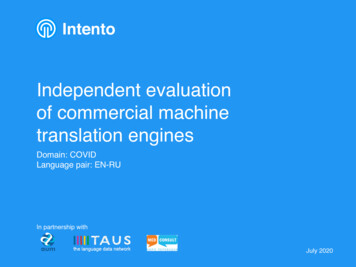


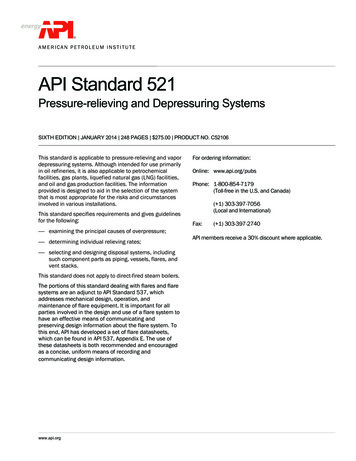
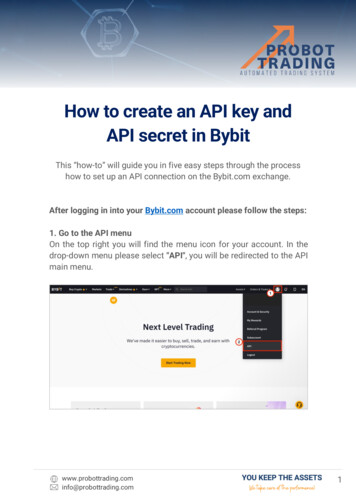
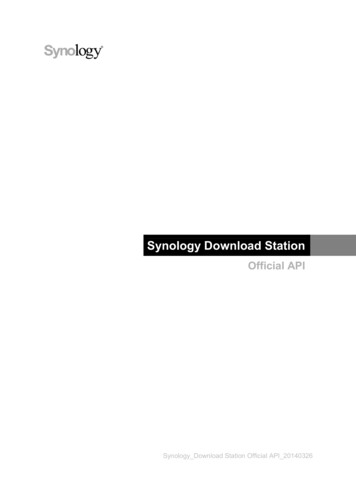
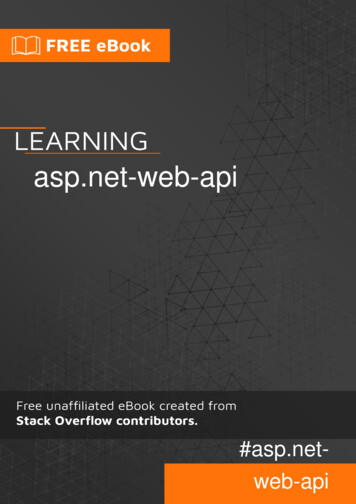
![Index [beckassets.blob.core.windows ]](/img/66/30639857-1119689333-14.jpg)

